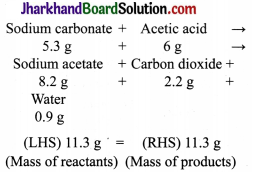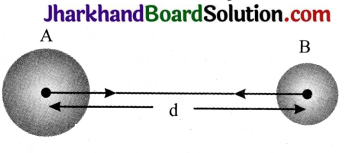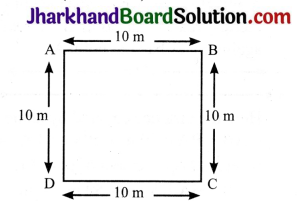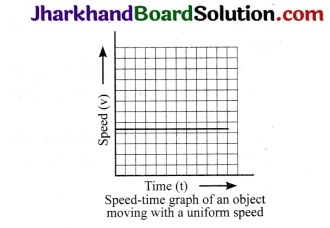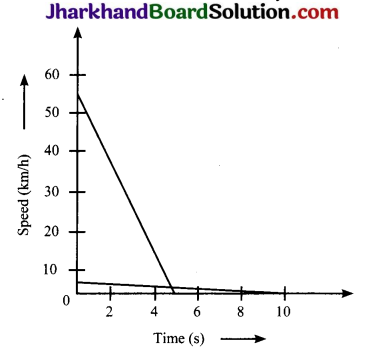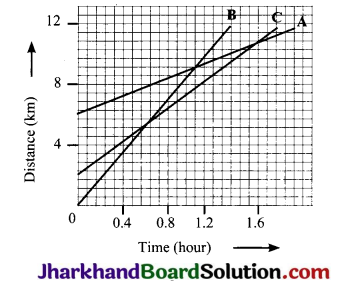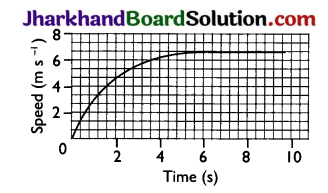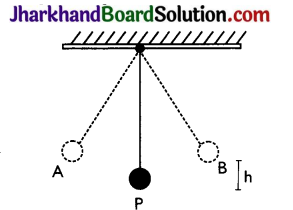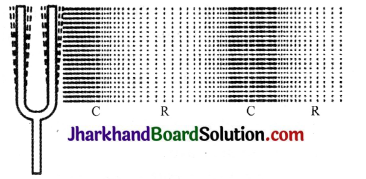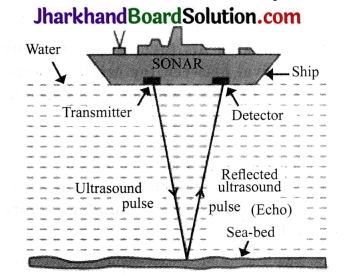JAC Board Class 9th Science Solutions Chapter Chapter 7 Diversity in Living Organisms
JAC Class 9th Science Diversity in Living Organisms InText Questions and Answers
Page 80
Question 1.
Why do we classify organisms?
Answer:
We classify organisms for easier and convenient study of the variety of life forms.
Question 2.
Give three examples of the range of variations that you see in life forms around you.
Answer:
Examples of range of variations observed in daily life are:
- Variety of living organisms in terms of size ranges from microscopic bacteria to tall trees upto 100.
- The colour, shape and size of snakes are completely different from those of lizards.
- The life span of different organisms is also quite varied, e.g., a crow lives for only 15 years, whereas a parrot lives for about 140 years.
Page 82
Question 1.
Which, do you think, is a more basic characteristic for classifying organisms?
(a) the place where they live.
(b) the kind of cells they are made o(f) Why?
Answer:
Classification based on the kind of cells they are made of is more basic as there can be wide variations in organisms living in a given place. Hence it cannot be a characteristic for classifying organisms.
Question 2.
What is the primary characteristic on which the first division of organisms is made?
Answer:
Whether organism is a eukaryotic cell, i.e., has membrane – bound cell organelles, or is a prokaryotic cell, i.e., does not have membrane – bound cell organelles.
![]()
Question 3.
On what bases are plants and animals put into different categories?
Answer:
Plants and animals are put into different categories on the bases of whether the organisms produce their own food through the process of photosynthesis (plants) or organisms get food from outside (animals). relatively recently. There is a possibility that advanced or younger organisms have undergone complexity in body structure during evolution to compete and survive.
Page 83
Question 1.
Which organisms are called primitive and how are they different from the so – called advanced organisms?
Answer:
Organisms with simple cellular structure and no division of labour are called primitive. Advanced organisms like mammals, have millions of cells and have different organs and organ systems for different biological functions.
Question 2.
Will advanced organisms be the same as complex organisms? Why?
Answer:
Yes, advanced organisms will be the same as complex organisms. This is because the advanced organisms have acquired their particular body designs relatively recently. There is a possibility that advanced or younger organisms have undergone complexity in body structure during evolution to compete and survive.
Page 85
Question 1.
What is the criterion for classification of organisms as belonging to kingdom Monera or Protista?
Answer:
It is the presence or absence of a well defined nucleus. Monera has no nuclear membrane, while Protista shows well defined nucleus.
Question 2.
In which kingdom will you place an organism which is single-celled, eukaryotic and photosynthetic?
Answer:
Kingdom Protista.
Question 3.
In the hierarchy of classification, which group will have the smallest number of organisms with a maximum number of characteristics in common and which will have the largest number of organisms?
Answer:
Organisms belonging to a species will have the smallest number of organisms with a maximum number of characteristics in common. Kingdom will have the largest number of organisms.
Page 88
Question 1.
Which division among plants has the simplest organisms?
Answer:
Thallophyta or algae.
Question 2.
How are pteridophytes different from the phanerogams?
Answer:
Pteridophytes have naked embryo and inconspicuous reproductive organs whereas phanerogams have well differentiated reproductive organs and covered embryo.
Question 3.
How do gymnosperms and angiosperms differ from each other?
Answer:
In gymnosperms, reproductive organs are present in cones. The plants bear naked seeds. In angiosperms, reproductive organs are flowers. The seeds are enclosed within fruit.
Question 1.
How do poriferan animals differ from coelenterate animals?
Answer:
| Poriferans | Coelenterates |
| 1. Poriferan animals have many small pores, called ostia, all over the body and a large opening at the top. | 1. Coelenterate animals lack ostia and have only one opening. |
| 2. They have canal system for circulating water throughout the body. | 2. They do not have water canal system in the body. |
| 3. External skeleton is present. | 3. Skeleton is absent. |
| 4. Their body is less differentiated. | 4. Their body is more differentiated. |
| 5. Tentacles are absent. | 5. Tentacles are present. |
Question 2.
How do annelid animals differ from arthropods?
Answer:
| Arthropods | Annelids |
| 1. Exoskeleton pres – ent. | 1. No skeleton |
| 2. Body is segmented into head, thorax and abdomen. | 2. Body is segmented into rings. |
| 3. Sexes are usually separate. | 3. Sexes may be united (hermaphrodites) or separate. |
Question 3.
What are the differences between amphibians and reptiles?
Answer:
| Amphibians | Reptiles |
| 1. Adapted to live in water and land, can breathe by skin in water. | 1. Can live in water but need to come to surface to breathe oxygen. |
| 2. Skin is moist and soft. | 2. Skin is dry and has scales. |
| 3. Respiration is either through gills or lungs. | 3. Respiration is through lungs. |
| 4. Move by hopping | 4. Move by crawling. |
| 5. Development is indirect through tadpole stage. | 5. Development is direct with no intermediate stage in life cycle. |
Question 4.
What are the differences between animals belonging to the Aves group and those in the Mammalia group?
Answer:
| Aves | Annelids |
| 1. Aves have beak. | 1. Mammalia do not have beak. |
| 2. Their body is cov – ered with feathers. with hair. Feathers are absent. | 2. Their body is covered |
| 3. Forelimbs are modi | 3. Forelimbs are not modified into wings flight. as in birds. However, forelimbs may be modified for various purposes. |
| Aves | Mammalia |
| 1. They lay eggs | 1. Most of the mammals produce young ones. |
| 2. They do not have glands to produce mammary glands to produce milk for milk for young ones. | 2.They have mammary glands to produce milk for milk for young ones. |
JAC Class 9th Science Diversity in Living Organisms Textbook Questions and Answers
Question 1.
What are the advantages of classifying organisms?
Answer:
Following are the advantages of classification:
- Classification helps us identify the living organisms easily.
- It makes the study of a wide variety of organisms easy and systematic.
- It makes the study of similarities and dissimilarities among organisms easy.
- It enables us to understand how complex organisms evolved over time.
- Classification helps us understand the inter – relationships among different groups.
- It forms the basis of other branches of bio – sciences like bio-geography, environmental biology, ecology, etc.
- It also provides a systematic way to identify known and unknown organisms.
- Classification systems are accepted internationally. This aids communication between scientists.
Question 2.
How would you choose between two characteristics to be used for developing a hierarchy in classification?
Answer:
The characteristic which is dependent on the previous one and would decide the variety in the next level should be chosen for developing a hierarchy in classification.
- Presence of vertebral column in human beings can be considered under vertebrata.
- Presence of four limbs makes them the members of tetrapoda.
- Presence of mammary glands classifies them under mammalia.
![]()
Question 3.
Explain the basis for grouping organisms into five kingdoms.
Answer:
The bases for grouping organisms into five kingdoms are as follows:
- Cellular structure: The two major divisions based on the cellular structure within living things are prokaryotes and eukaryotes.
- Number of cells: It divides organisms into unicellular and multicellular.
- Mode and source of nutrition: Organisms are divided, based on the mode of nutrition, into autotrophis and heterotrophic.
- Presence or absence of cell wall: It divides organisms into plants and animals.
- Phylogenetic relationship and body organisation: Based on body organisation and evolution, organisms are divided into simple and complex organisms.
Question 4.
What are the major divisions in kingdom Plantae? What is the basis for these divisions?
Answer:
Divisions in kingdom Plantae are:
1. Thallophyta,
2. Bryophyta,
3. Pteridophyta,
4. Gymnosperms,
5. Angiosperms.
Bases for classification of kingdom Plantae into these divisions are:
- Whether the plant body has well differentiated and distinct components or not.
- Whether the plant body has special tissues for the transport of water and other substances within it or not.
- Whether the plant bears the seeds or not.
- Whether the seeds are enclosed within fruits or not.
Question 5.
How are the criteria for deciding divisions in plants different from the criteria for deciding the subgroups among animals?
Answer:
The criteria for deciding divisions in plants are the presence or absence of seeds and flowers, differentiation of body parts, presence or absence of specialised vascular tissues and nature of the seed The criteria for subdivisions among animals are the presence or absence of notochord and coelom, position of nerve cord, gill slits, body segmentation, habitat and oviparity or viviparity.
Question 6.
Explain how animals in Vertebrata are classified into further subgroups.
Answer:
The subphylum Vertebrata has been classified into two divisions, viz. Agnatha and Gnathostomata, on the basis of presence or absence of jaws and paired appendages. Agnatha does not have jaws and paired appendages while Gnathostomata bear jaws and paired appendages. These division have further been classified into Pisces, Amphibia, Reptilia, Aves and Mammalia.
1. The major characteristics used to classify these groups are as follows:
- The kind of exoskeleton or endoskeleton,
- The kind of respiratory organs,
- The method of reproduction and giving birth to young ones.
2. The classes with their characteristics are as follows:
- Exoskeleton of scales: endoskeleton of cartilage or bones; breathing through gills Pisces (fishes).
- Breathing through gills only in larva: skin slimy – Amphibia.
- Exoskeleton of scales: laying eggs outside the water – Reptilia.
- Exoskeleton of feathers: lay eggs; flight possible – Aves (Birds).
- Exoskeleton of hair: external ears give birth to young ones – Mammalia.
